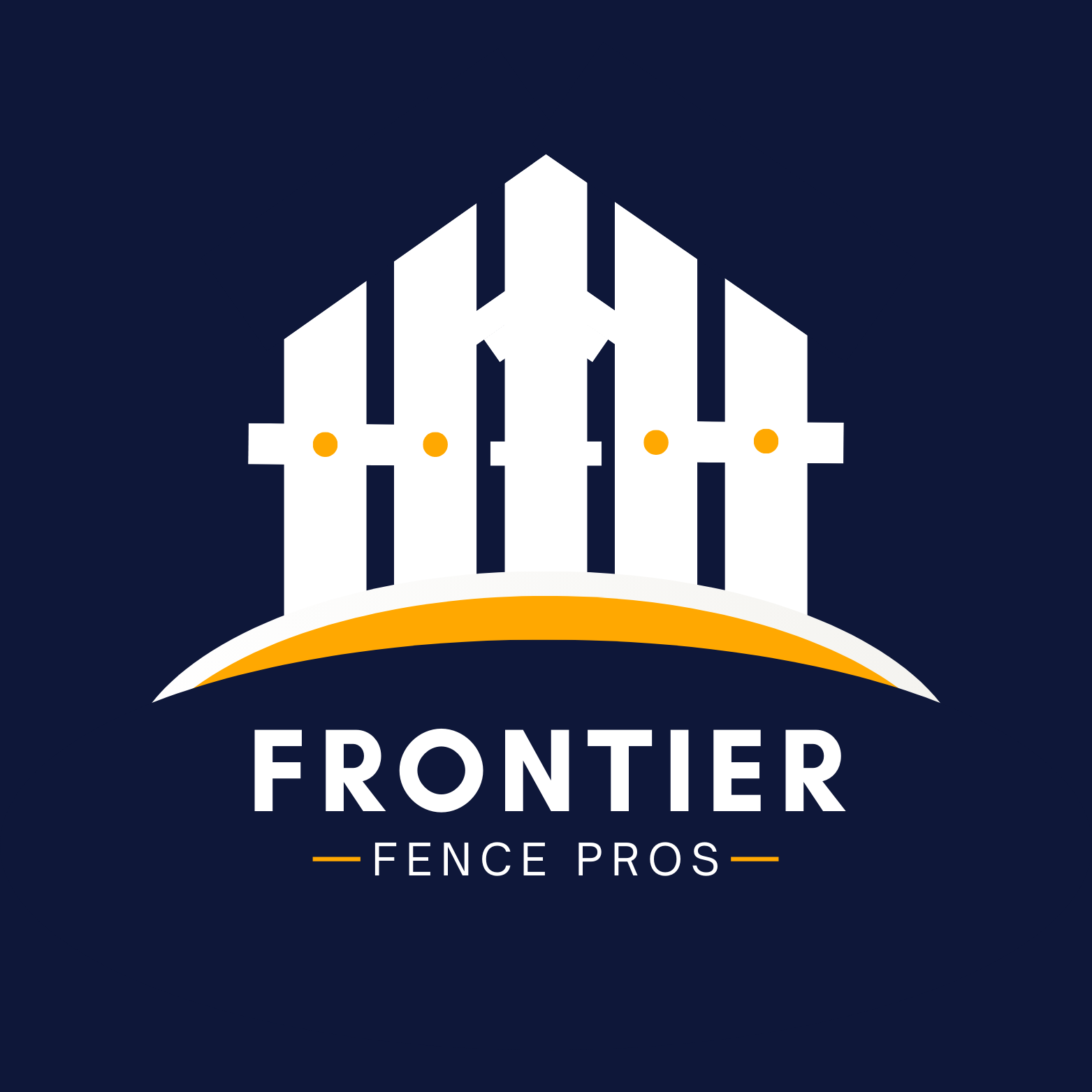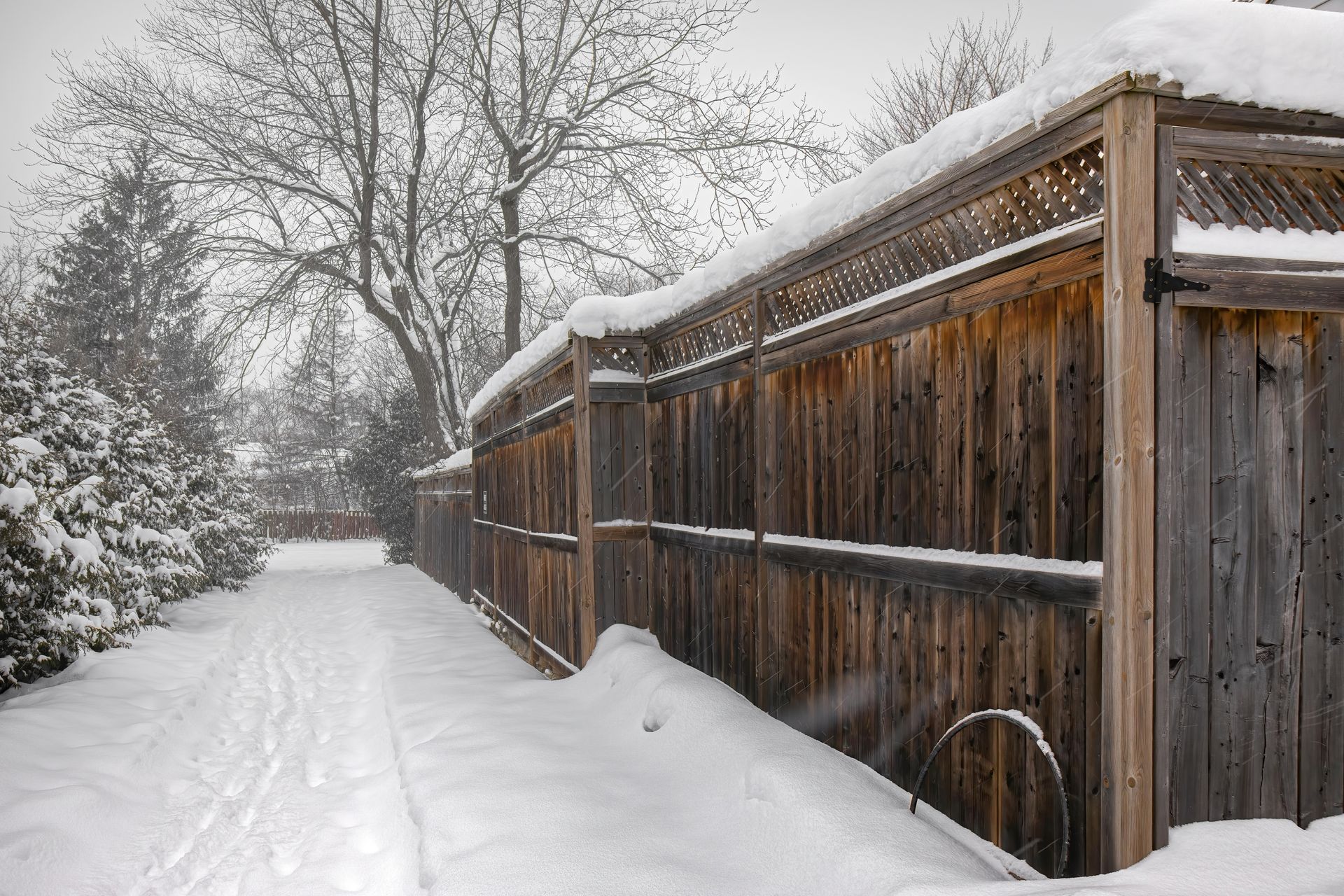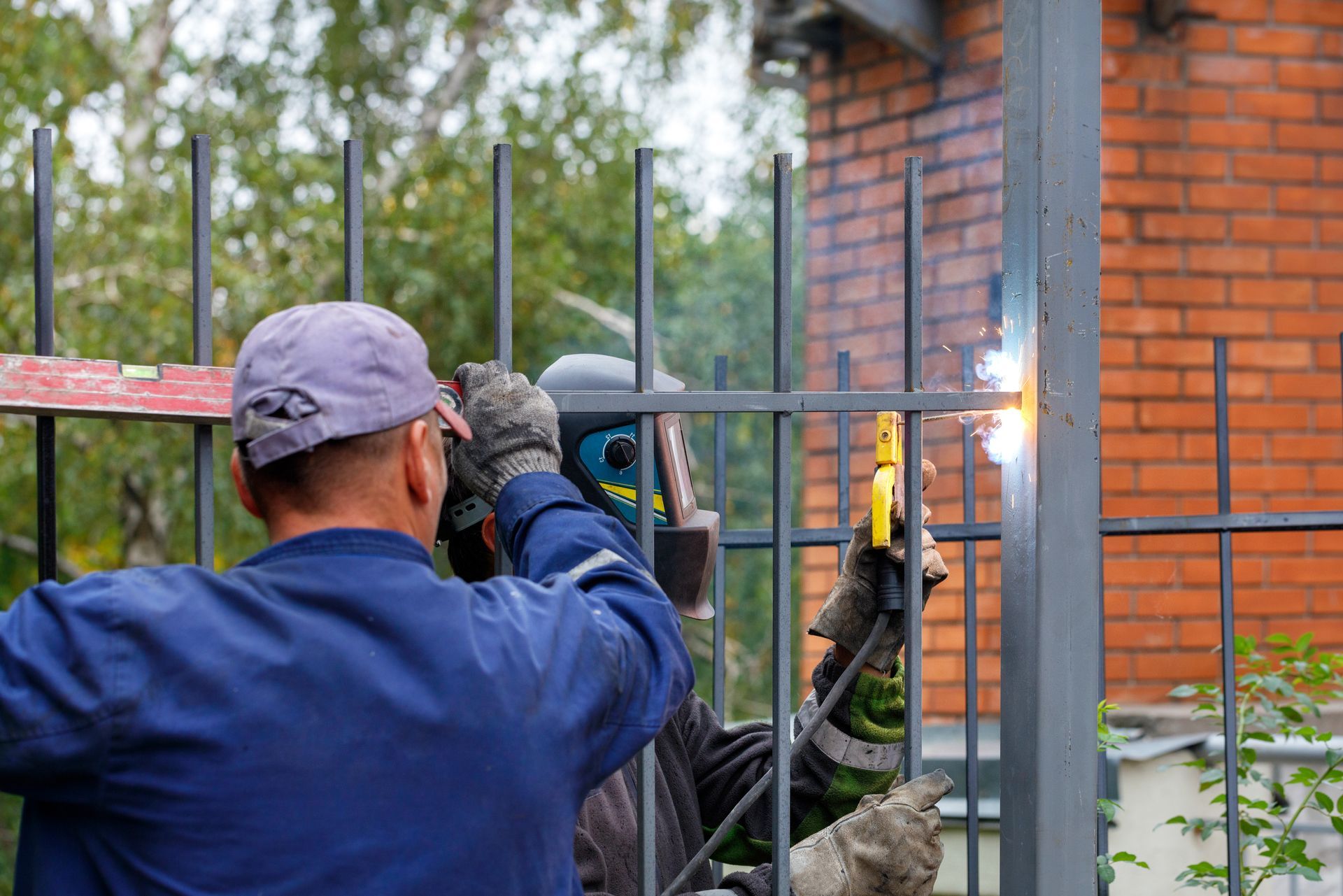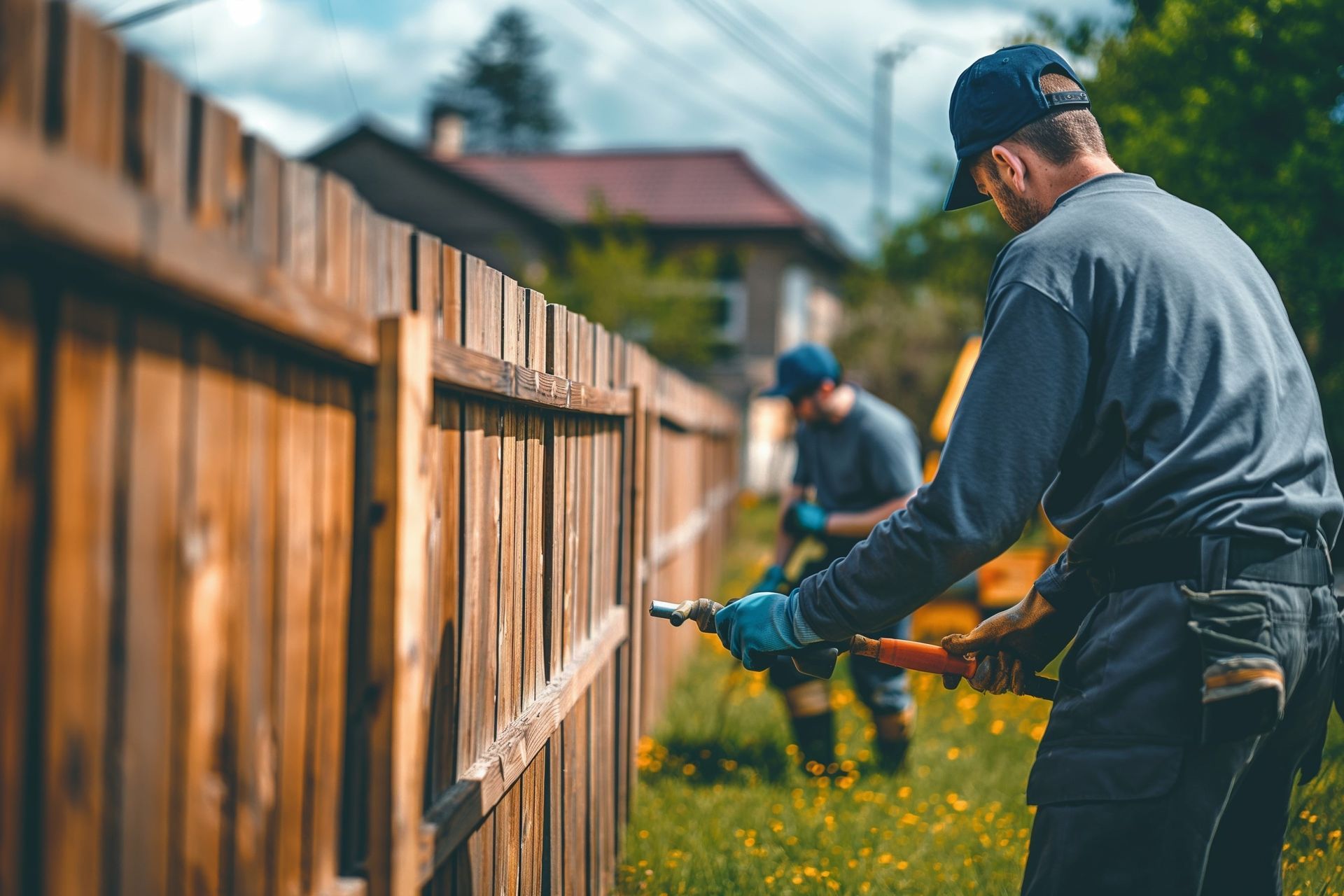Frontier Fence Pros Blog
How To Choose The Best Fence
For Alaska Winters
Alaska’s winters are no joke—extreme cold, heavy snow, and high winds can put serious stress on any outdoor structure, especially fencing. If you’re a homeowner in Alaska, choosing the right fence isn’t just about curb appeal—it’s about durability, performance, and long-term value. In this guide, we’ll walk you through the most important factors to consider when selecting a fence that can stand up to Alaska’s unforgiving climate.
Why Alaska’s Climate Demands a Different Approach
- Subzero temperatures and frost heaving
- Heavy snow accumulation and drifting
- Wind exposure and freeze-thaw cycles
- Importance of long-term structural integrity
Alaska’s extreme winters bring heavy snow, high winds, freezing temperatures, and shifting ground due to frost heave—conditions that can quickly wear down standard fencing materials and designs. Unlike milder climates, fences in Alaska must be built to withstand prolonged exposure to moisture, ice, and dramatic temperature swings. Choosing the wrong materials or construction methods can lead to cracking, warping, or even collapse. That’s why homeowners in Alaska need to take a different approach—prioritizing durability, low maintenance, and structural integrity over aesthetics alone.
Top Fence Materials That Withstand Harsh Winters
Pressure Treated Wood
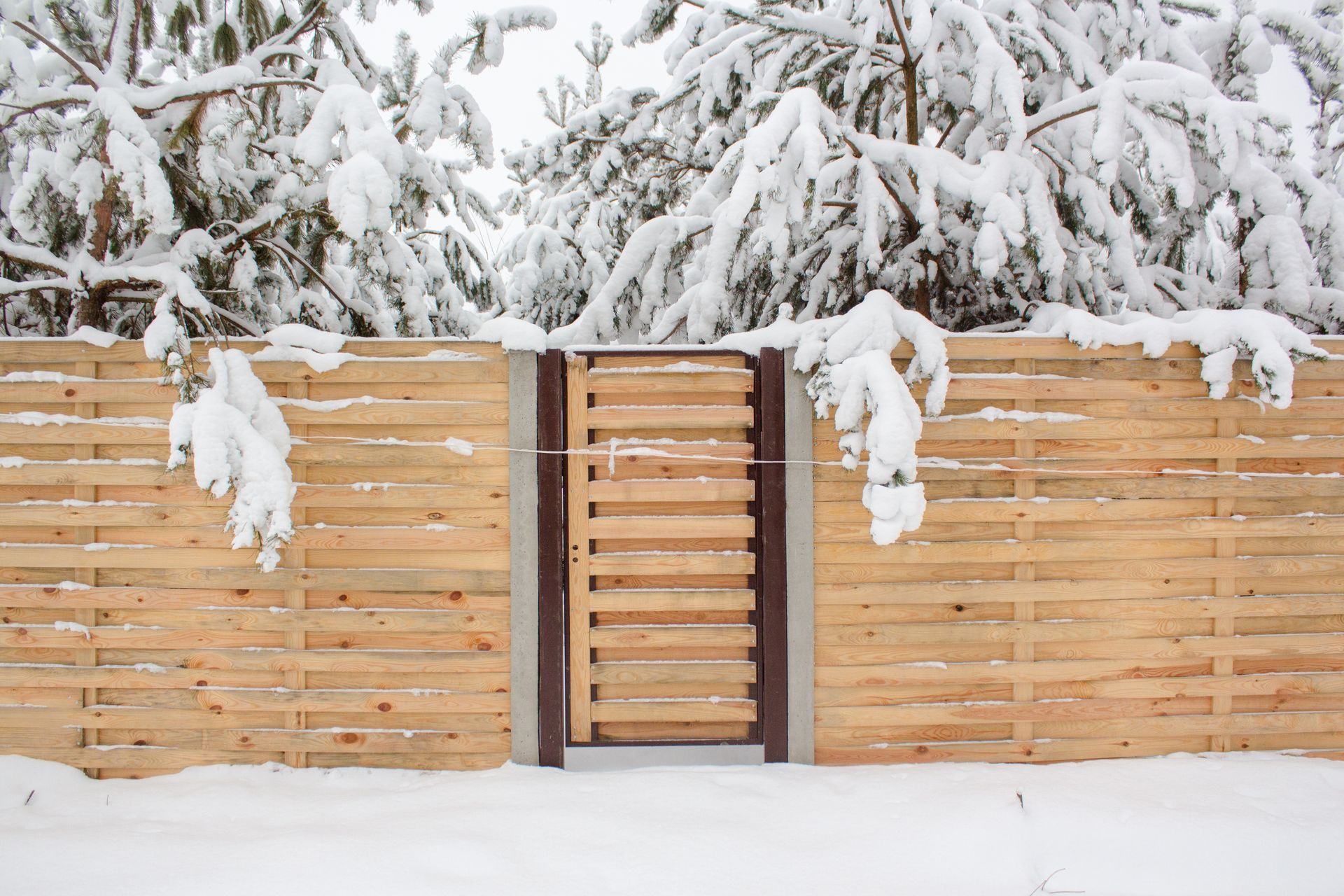
- Pros: Affordable, widely available, easy to repair
- Cons: Requires maintenance, prone to warping
Pressure-treated wood is a popular fencing option in Alaska because it offers natural warmth and a classic look while being fortified to resist rot, insects, and moisture damage. The treatment process infuses preservatives deep into the wood, helping it withstand the constant freeze-thaw cycles and wet conditions typical of Alaskan winters. However, it still requires regular maintenance—like sealing or staining—to prevent cracking and warping over time. For homeowners who want a traditional wood fence that can endure harsh elements with proper care, pressure-treated wood strikes a solid balance between beauty and resilience.
Vinyl Fencing
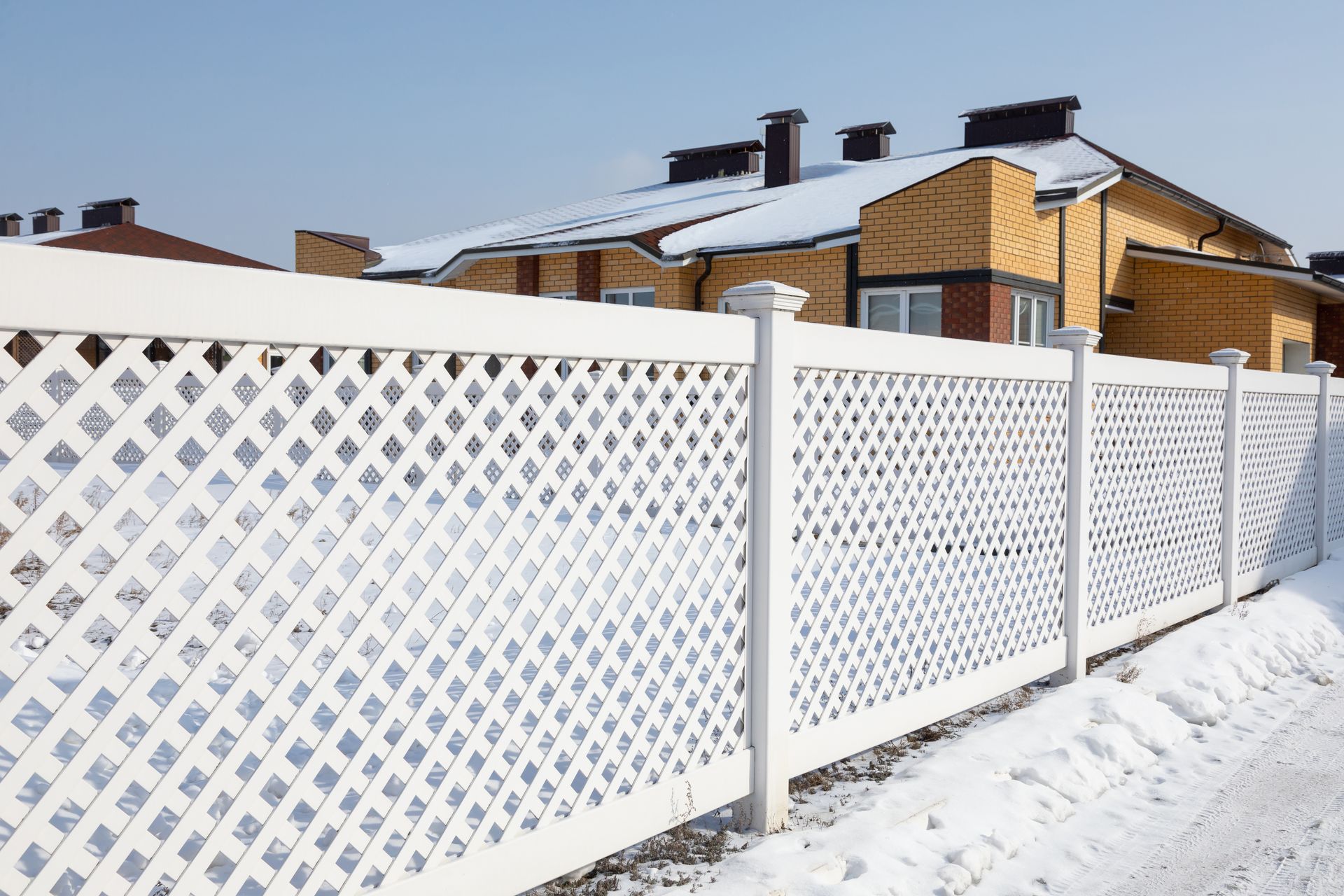
- Pros: Affordable, widely available, easy to repair
- Cons: Requires maintenance, prone to warping
Vinyl fencing is a low-maintenance option that resists moisture, rot, and insect damage—making it an appealing choice for Alaska’s wet and snowy climate. Its non-porous surface means it won’t absorb water, which helps prevent warping and cracking. However, extreme cold can make vinyl more brittle, increasing the risk of cracking or breakage under heavy impact or shifting conditions like frost heave. For homeowners seeking a clean, modern look with minimal upkeep, vinyl fencing can work well if installed properly and in areas with less ground movement.
Chain Link with Privacy Slats
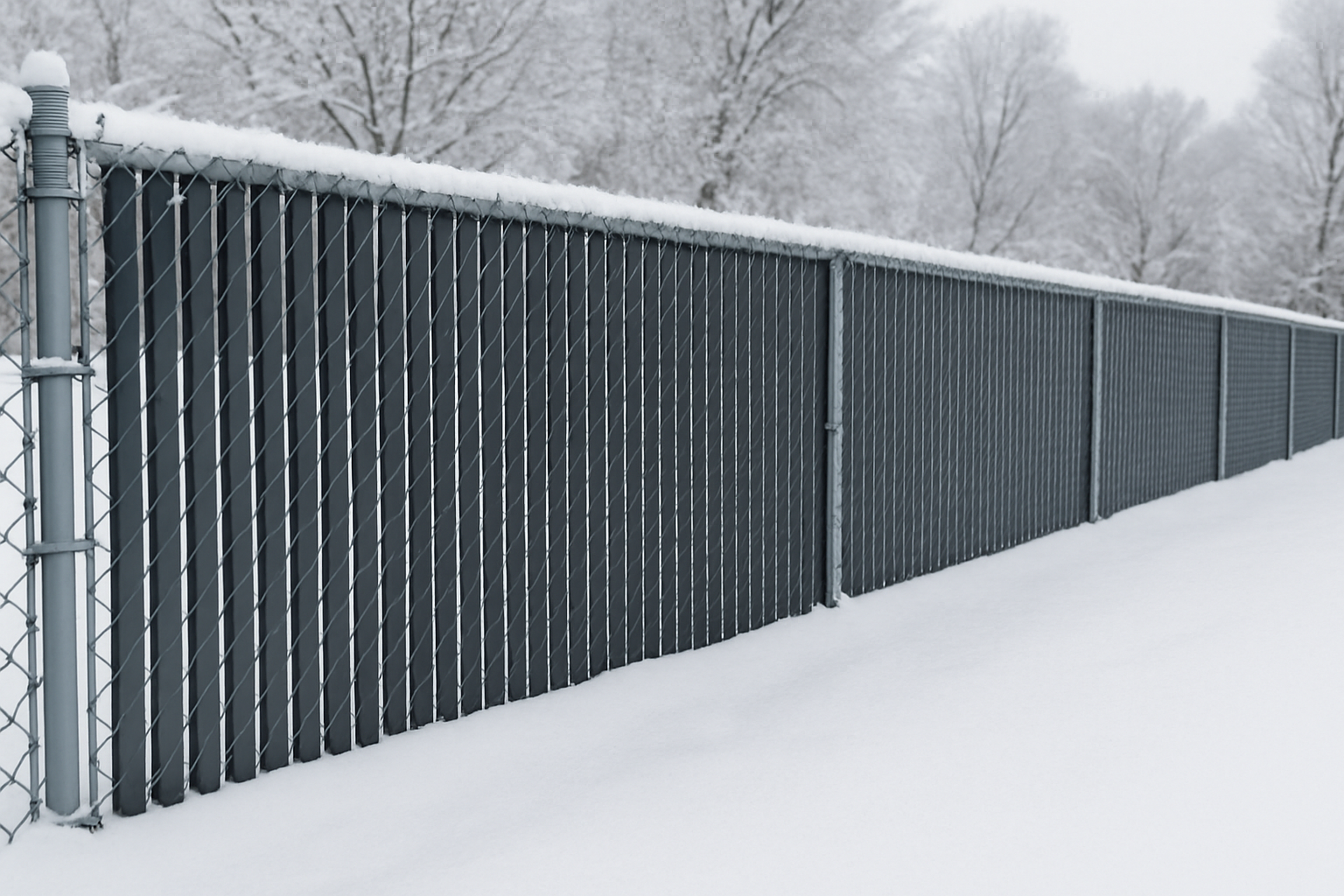
- Pros: Durable, cost-effective, good wind resistance
- Cons: Industrial look, slats may need replacing
Chain link fences are a durable and cost-effective option that holds up well in Alaska’s challenging weather, especially when paired with privacy slats. The metal framework resists heavy snow and wind, while the slats add an extra layer of protection by reducing wind flow and increasing privacy. Privacy slats also help block snow drifts from piling up directly against the fence, which can reduce pressure and potential damage. This combination offers a practical balance of strength, visibility control, and low maintenance—making it a smart choice for homeowners seeking security and privacy without sacrificing durability.
Aluminum Fencing
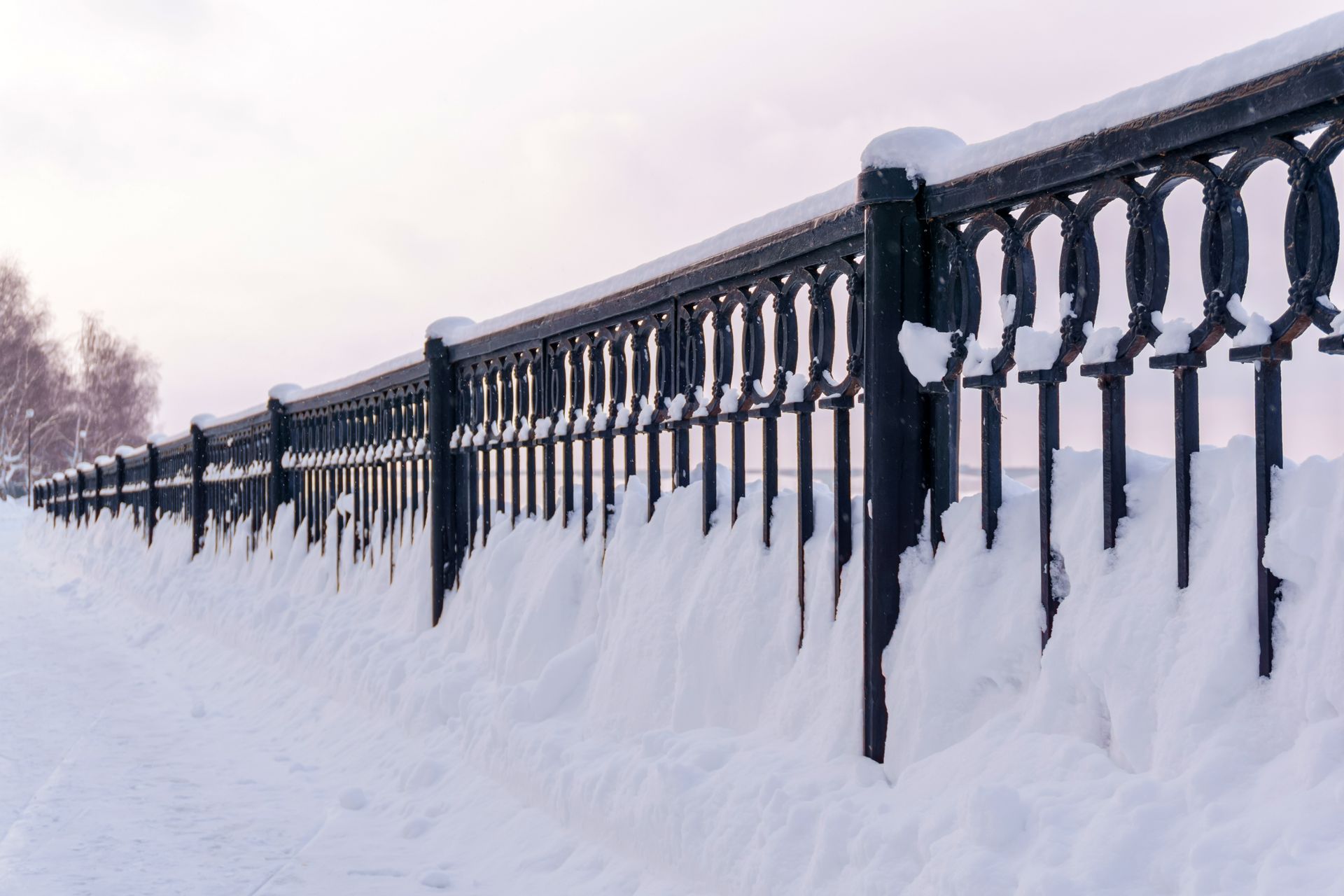
- Pros: Rust-resistant, low maintenance, elegant look
- Cons: Less privacy, not as sturdy in high winds
Aluminum fencing offers a sleek, low-maintenance option that stands up reasonably well to Alaska’s winter elements. It doesn't rust like iron and is powder-coated to resist corrosion, making it a smart choice for homeowners who want a durable, modern-looking fence without the upkeep. However, because aluminum is lightweight, it may not provide the same level of strength or wind resistance as heavier materials like steel or wood. While it's not ideal for privacy or heavy snow loads, aluminum works well for decorative fencing, perimeter boundaries, and areas where aesthetics and minimal maintenance are key.
Steel or Iron with Powder Coating
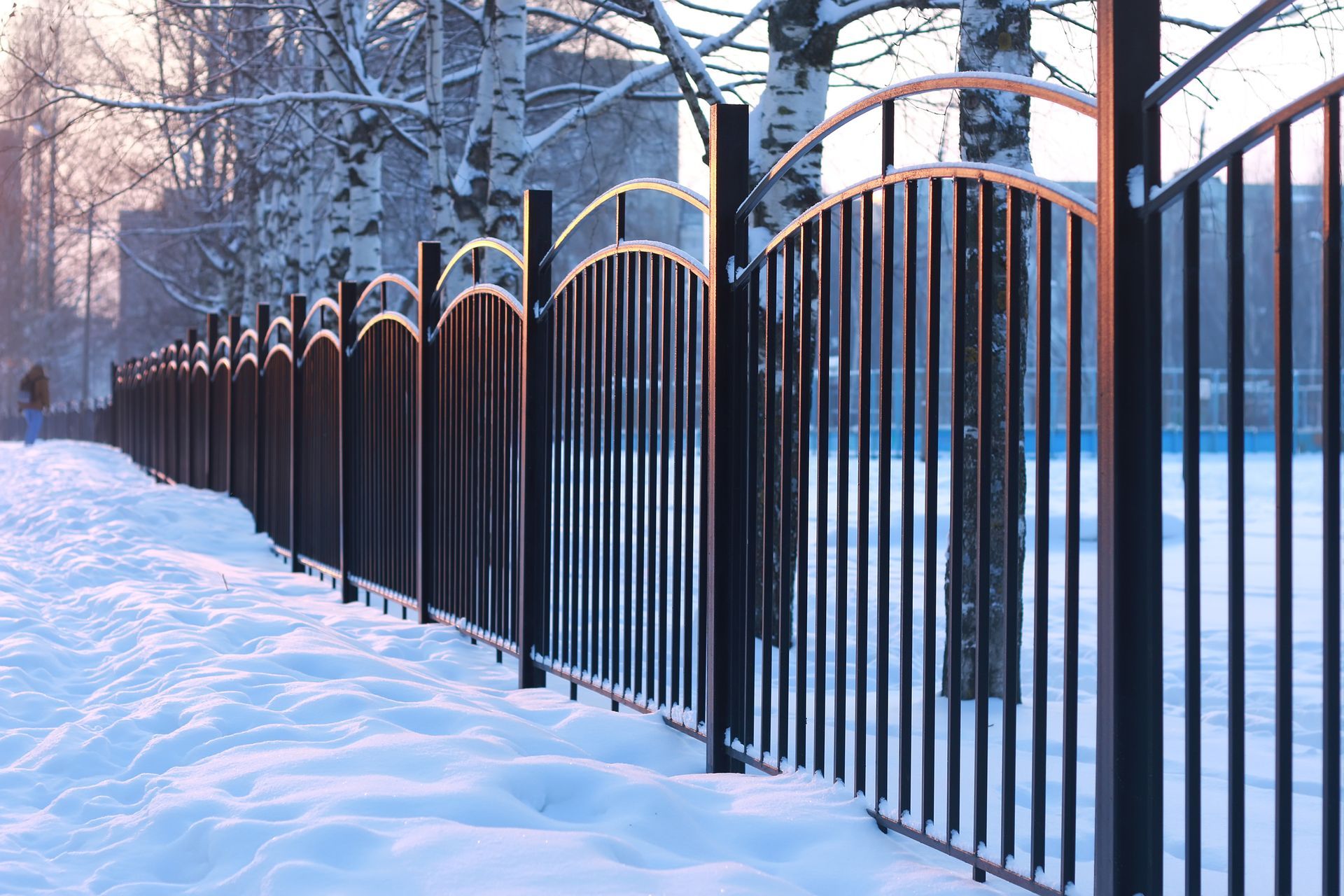
- Pros: Superior strength, long lifespan
- Cons: Higher cost, heavier installation requirements
Steel or iron fencing with a quality powder coating is one of the most durable options for withstanding Alaska’s extreme winters. The powder coating acts as a protective barrier against moisture, preventing rust and corrosion that would otherwise damage bare metal in freeze-thaw conditions. These fences are exceptionally strong, making them ideal for areas with heavy snow or wind. While they require a larger upfront investment, their longevity and minimal maintenance needs can make them cost-effective over time. For homeowners prioritizing strength, security, and a classic look that holds up to the harsh climate, powder-coated steel or iron is a top-tier choice.
Design Features That Improve Cold Weather Performance
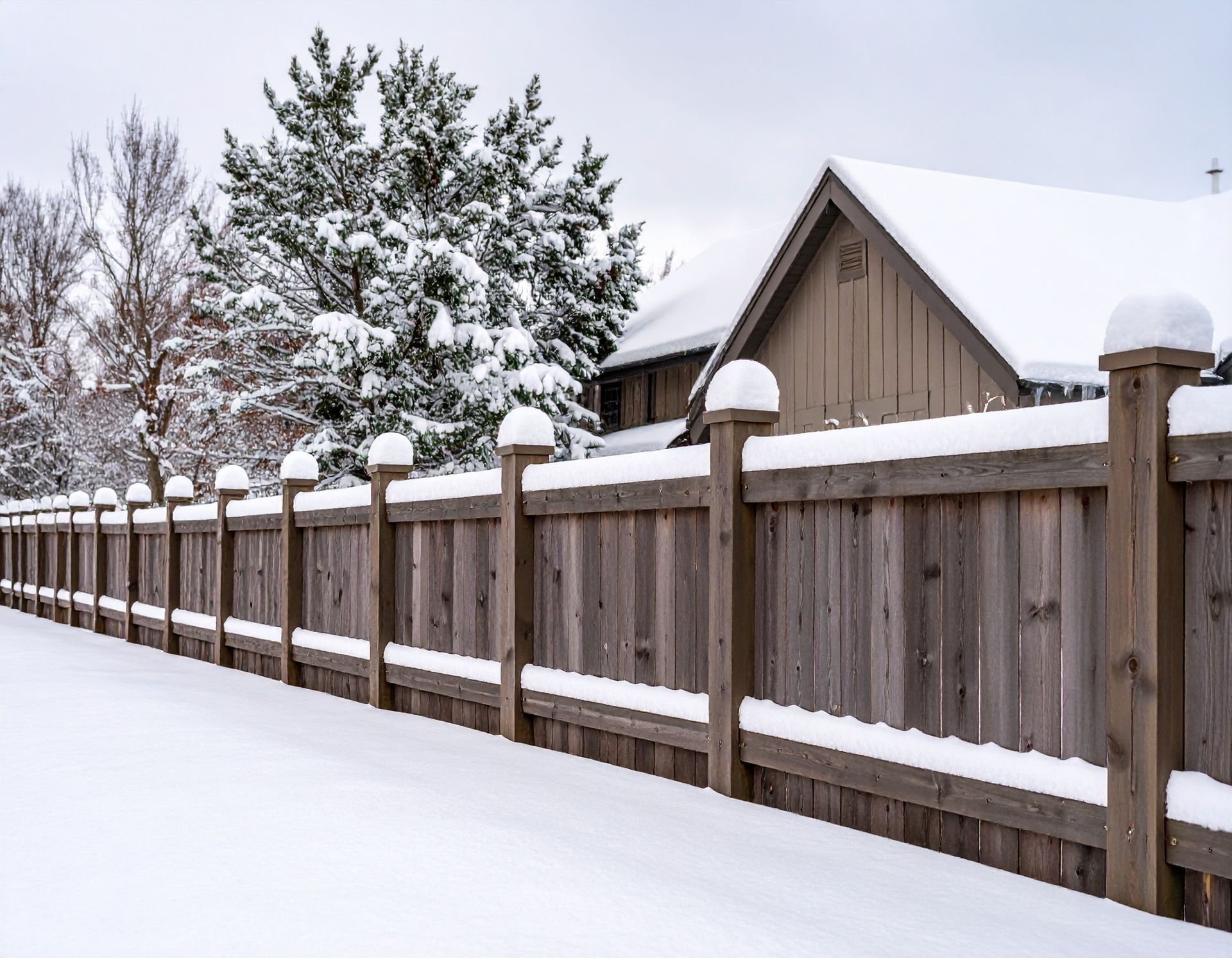
- Proper post depth below the frost line: Setting fence posts below the frost line helps prevent shifting and heaving during freeze-thaw cycles.
- Wind-resistant spacing and panel design: Choosing panels with proper spacing reduces wind resistance and lowers the risk of fence blowover.
- Reinforced corners and gate hardware: Sturdy corner posts and heavy-duty gate hardware provide added stability where stress is highest.
- Snow-shedding styles to prevent damage: Opting for open or sloped designs allows snow to shed naturally, minimizing pressure buildup on the fence.
In Alaska’s cold and stormy climate, the right design features can significantly extend the life of your fence. Deep-set posts anchored below the frost line prevent shifting from ground heave, while wind-resistant panel spacing reduces pressure during high gusts. Reinforced corners and durable gate hardware add critical strength at stress points, especially where snow loads and ice buildup are common. Additionally, fences with open or sloped designs help snow shed more easily, preventing damage from heavy accumulation. Together, these design elements ensure your fence remains stable, functional, and visually appealing—even in the harshest winter conditions.
Installation Timing: Why Season Matters
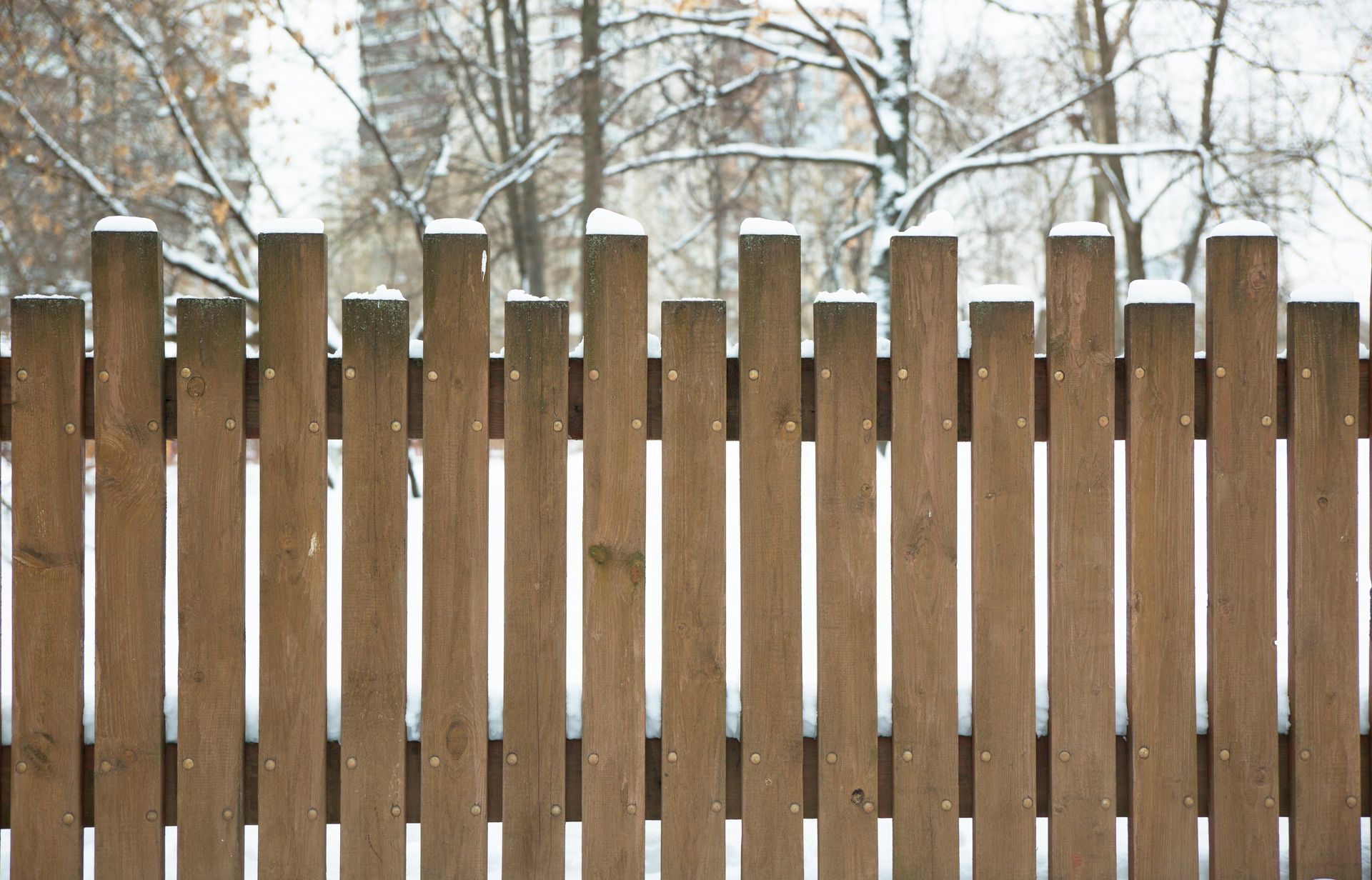
- Best time to install a fence in Alaska: Late spring through early fall is typically the best window for fence installation in Alaska.
- Avoiding frozen ground and weather delays: Scheduling around thawed ground helps prevent digging issues and reduces the risk of weather-related construction delays.
- Benefits of planning ahead in fall or spring: Planning early ensures contractor availability and gives you time to secure permits before the busy summer season.
Timing your fence installation around Alaska’s short building season is key to avoiding complications and extra costs. Installing during late spring to early fall ensures the ground is thawed and easier to work with, preventing delays caused by frozen soil or unpredictable weather. Planning your project in advance—either in the fall for early spring scheduling or in early spring for summer work—gives you a better chance of securing your preferred contractor and preparing necessary permits. By aligning your timeline with the seasons, you’ll set your project up for smoother execution and long-term durability.
Maintenance Tips to Extend Fence Life in Cold Climates
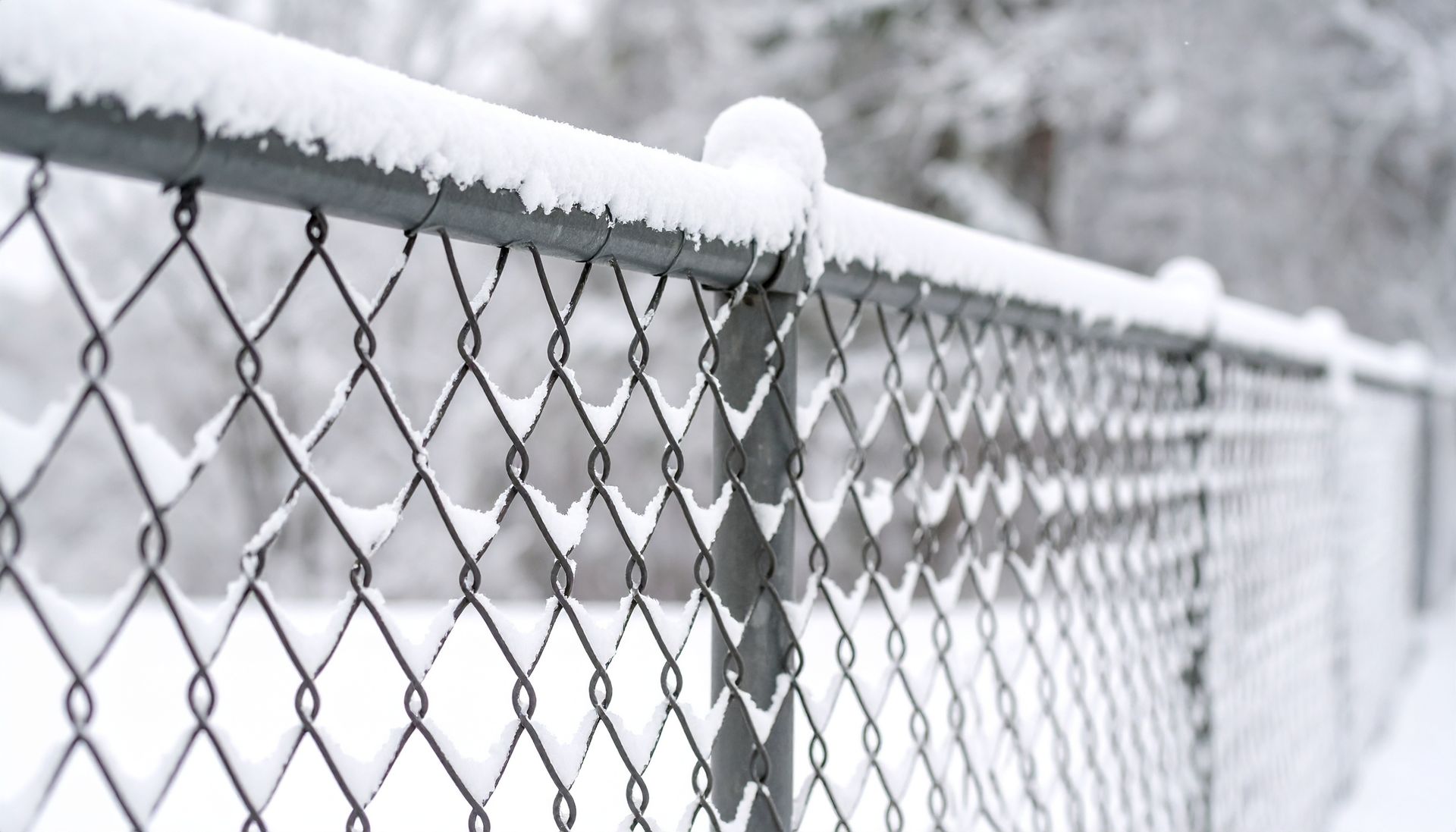
- Winterizing wood and sealing joints: Applying sealant and treating wood before winter protects it from moisture and freeze damage.
- Removing snow buildup to prevent warping: Regularly clearing snow off your fence reduces pressure that can cause warping or structural damage.
- Annual inspections and post-straightening: Yearly checks help catch issues early, and straightening posts keeps your fence stable after harsh weather.
Proper maintenance is essential to keep your fence strong and looking great through Alaska’s harsh winters. Start by winterizing wood fences with sealants to protect against moisture and cracking. Regularly remove snow buildup to prevent excessive weight that can cause warping or damage. Conduct annual inspections to identify and fix loose boards, leaning posts, or hardware issues early before they worsen. Straightening posts and tightening hardware after winter storms ensures your fence stays stable and secure. With consistent care and attention, your fence can withstand cold weather challenges and provide lasting performance for years to come.
Professional Installation vs DIY in Alaska
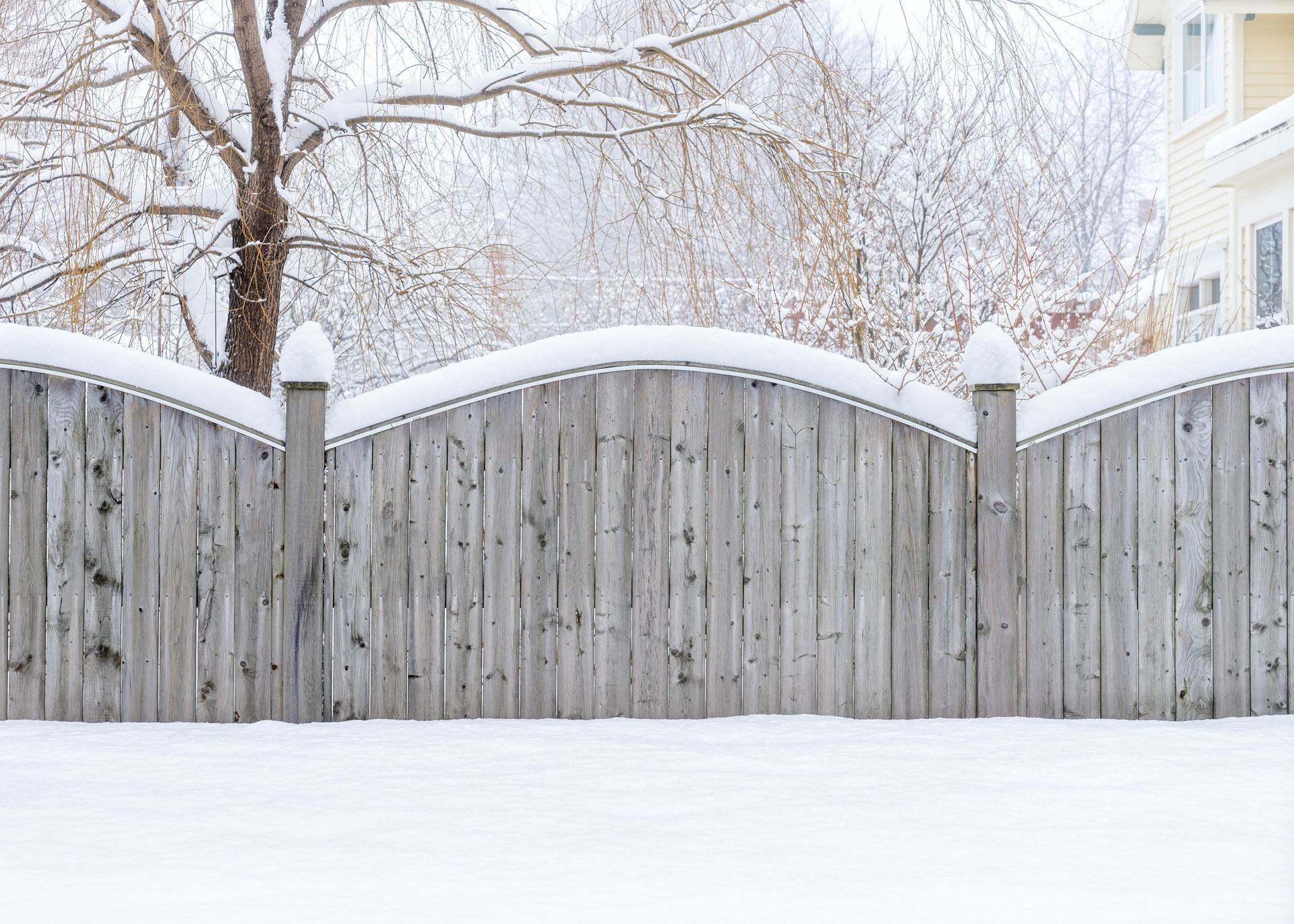
- Challenges of frozen ground and terrain: Frozen ground and uneven terrain can complicate digging and fence installation in Alaska’s harsh environment.
- Local codes, permits, and property lines: Understanding local regulations and property boundaries ensures your fence is legal and hassle-free.
- The value of hiring an experienced Alaska fencing contractor: Experienced contractors know how to navigate Alaska’s unique conditions for a durable, code-compliant fence.
Building a fence in Alaska comes with specific challenges like frozen ground, rugged terrain, and strict local regulations that can impact your project’s success. Properly addressing these factors—such as securing the right permits, respecting property lines, and planning for difficult soil conditions—is crucial to avoid costly mistakes. That’s why hiring an experienced Alaska fencing contractor is invaluable. They bring the expertise needed to handle the environment and legal requirements, ensuring your fence is installed correctly, lasts longer, and meets all local codes. With the right guidance, your fence project can proceed smoothly, even in the toughest conditions.
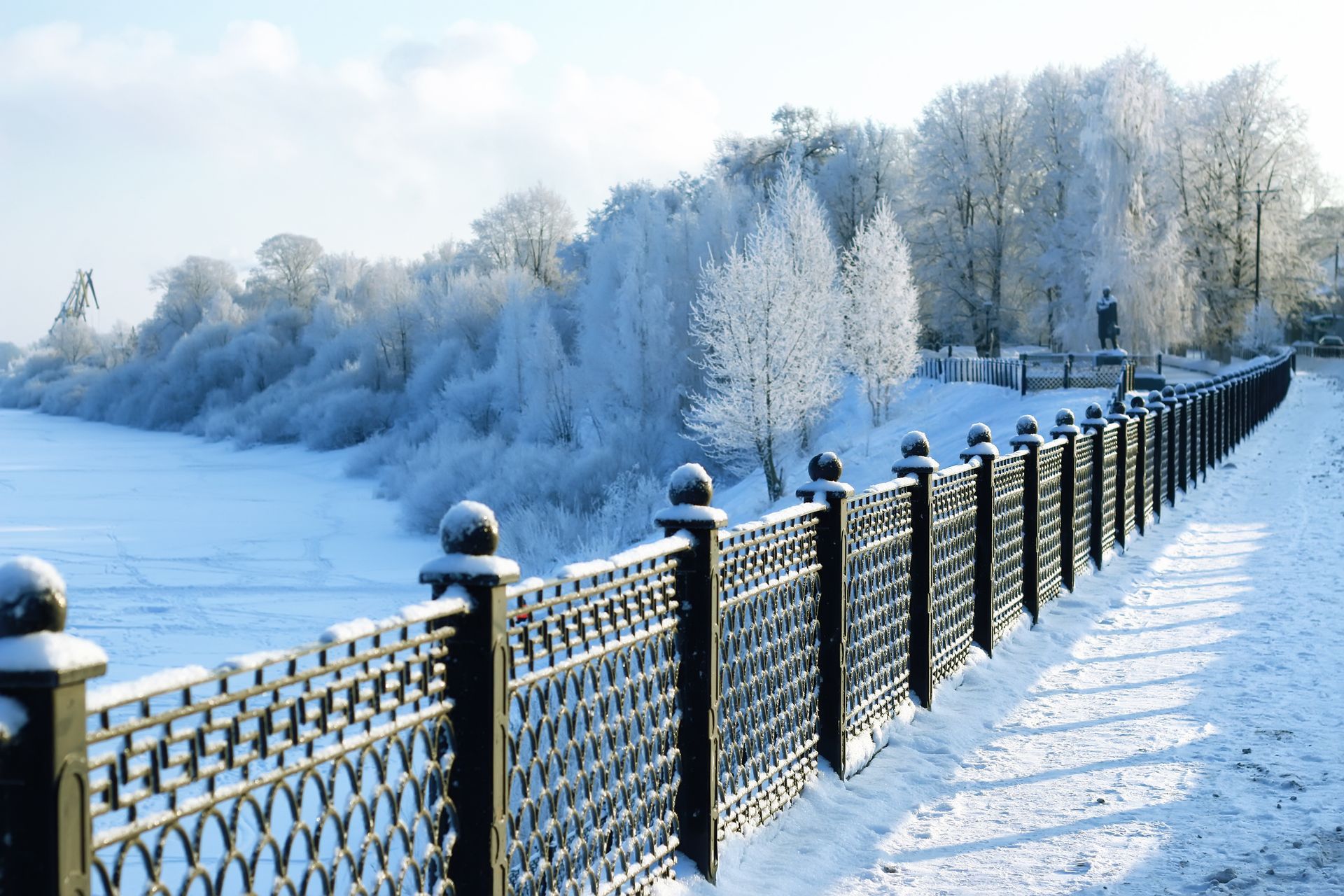
Choosing the right fence for Alaska’s harsh winters means balancing durability, maintenance, style, and cost. The wrong choice could lead to costly repairs, while the right one adds value and peace of mind for years to come.
If you're unsure which fence is best for your property, we're here to help. At Frontier Fence Pros, we specialize in building fences that are engineered for Alaska’s extreme conditions.
Contact us today
👈
📞
for a free consultation or quote—and let’s build a fence that lasts through every season.
